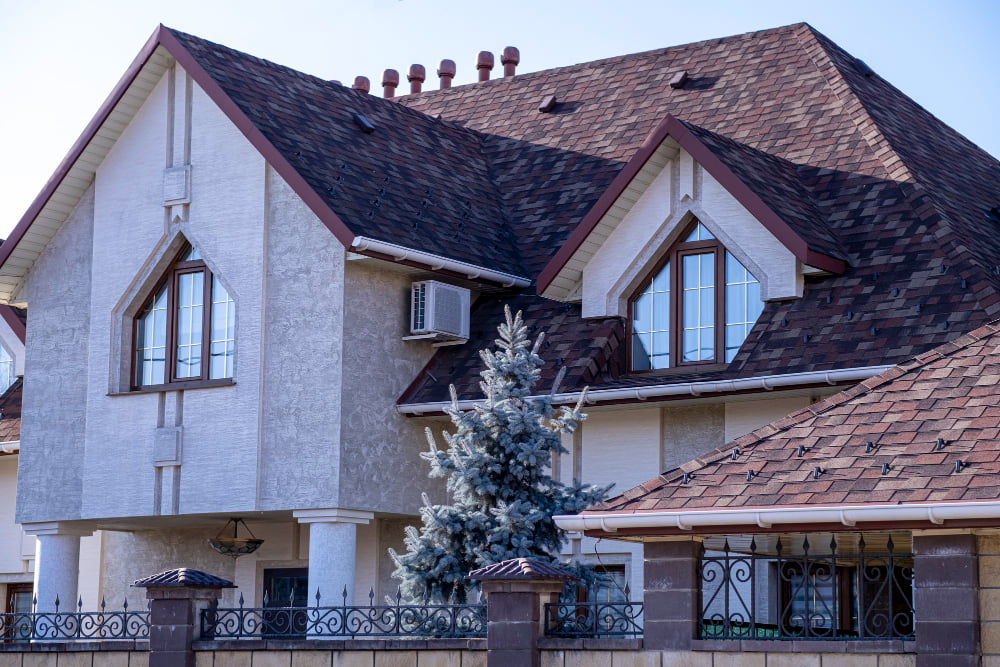Last updated on
Designing a roof for your home is more than just choosing materials and colors. It’s a blend of aesthetics, functionality, and longevity. Let’s delve into some key strategies and considerations that will guide you in designing a roof that not only complements your home’s style but also stands the test of time.
Understand Local Building Codes

Understanding local building codes is integral to roof design. The professionals working at RoofXUSA.com can explain how these codes, set by local governments, outline safety standards and specifications for construction, including roofs. They determine acceptable materials, minimum durability standards, and permissible design aspects, such as pitch and weight-bearing capacity. Adherence ensures safety, damage prevention, and efficient design.
Knowledge of these codes helps prevent unwanted modifications and legal complications post-construction. Additionally, understanding local codes can inform your selection of materials and design styles, enhancing the aesthetic and functional harmony between your roof and the local environment. Therefore, deciphering these codes is a fundamental step in designing a roof that is safe, durable, and aesthetically pleasing.
Assess Local Climate Factors
Assessing local climate factors is a crucial component of roof design. The environment of your area directly influences the selection of materials and the overall design of your roof. In areas prone to high winds, for example, you might consider a roof design with a steeper pitch to minimize wind damage. Similarly, in regions with heavy snowfall, a steeper roof can facilitate better snow removal and mitigate the risk of snow loads.
Alternatively, in hot and sunny climates, utilizing reflective roofing materials can help bounce back the sun’s rays, reducing the house’s interior temperature and saving on cooling costs. Furthermore, in areas with high rainfall, water-resistant materials and adequate drainage systems are key to preventing water damage. Thus, understanding local climate factors allows you to tailor the design of your roof to withstand specific environmental conditions, enhancing its durability and functionality.
Determine Roofing Materials

Another essential step in creating the perfect roof is picking all the right materials for it. Here are your options:
- Asphalt
- Metal
- Wood shingles or shakes
- Tile roofing
- Slate
- Composite
- Concrete
- Green roofing
- Solar tiles
Choosing the right roofing materials is crucial as it impacts not just the durability and function of your roof, but also the aesthetic appeal of your home. The choice of material determines how well the roof can resist weather conditions, its longevity, cost, and environmental impact.
Moreover, it also contributes to the overall architectural style of the house. Therefore, a thoughtful selection of roofing materials is an essential step in designing a roof that is visually appealing, robust, and harmonious with the local environment and your personal style.
Consider Ventilation and Insulation
Ventilation and insulation are pivotal factors when designing a perfect roof. A well-ventilated roof promotes airflow, preventing moisture buildup that can lead to mold, mildew, and structural damage. It also aids in dissipating heat, reducing cooling costs in the summer months.
On the other hand, proper insulation keeps your home warm during colder months, reducing heating costs and ensuring energy efficiency. It also minimizes the risk of ice dams forming on your roof during freezing conditions. Therefore, both ventilation and insulation contribute significantly to the overall durability, functionality, and energy efficiency of your roof, making them vital considerations in roof design.
Evaluate Slope and Style
The slope, or pitch, of the roof, can significantly impact its ability to shed water and snow, hence influencing its durability and maintenance needs. A roof with a steep slope is more efficient at preventing water stagnation or snow accumulation, reducing the risk of damage.
The style, on the other hand, affects the aesthetic appeal of your home. A roof style should blend seamlessly with the architectural design of your house, enhancing its overall visual appeal. Therefore, careful consideration of both slope and style is paramount in designing a roof that is both functional and aesthetically pleasing.
Account for the Future
Accounting for the future in roof design involves factoring in potential changes in lifestyle, local climate, and advancements in roofing technology. For instance, you may plan to increase your living space with a loft conversion, and therefore, a roof design conducive to alterations would be prudent. Similarly, climate change suggests changing weather patterns, necessitating materials and designs resilient to varying conditions.
Technology advancements could introduce more efficient or sustainable materials, and being open to these possibilities can enhance your roof’s environmental and economic performance over time. Hence, a future-oriented approach ensures your roof remains adaptable, resilient, and efficient — truly a perfect fit for your home.
Creating the perfect roof for your home is a multifaceted task. Remember, your roof should not only be aesthetically appealing but also durable, functional, and adaptable to future changes. By considering local building codes, climate factors, materials, ventilation, insulation, slope, style, and future developments, you can design a roof that truly fits your home.
Recap:



